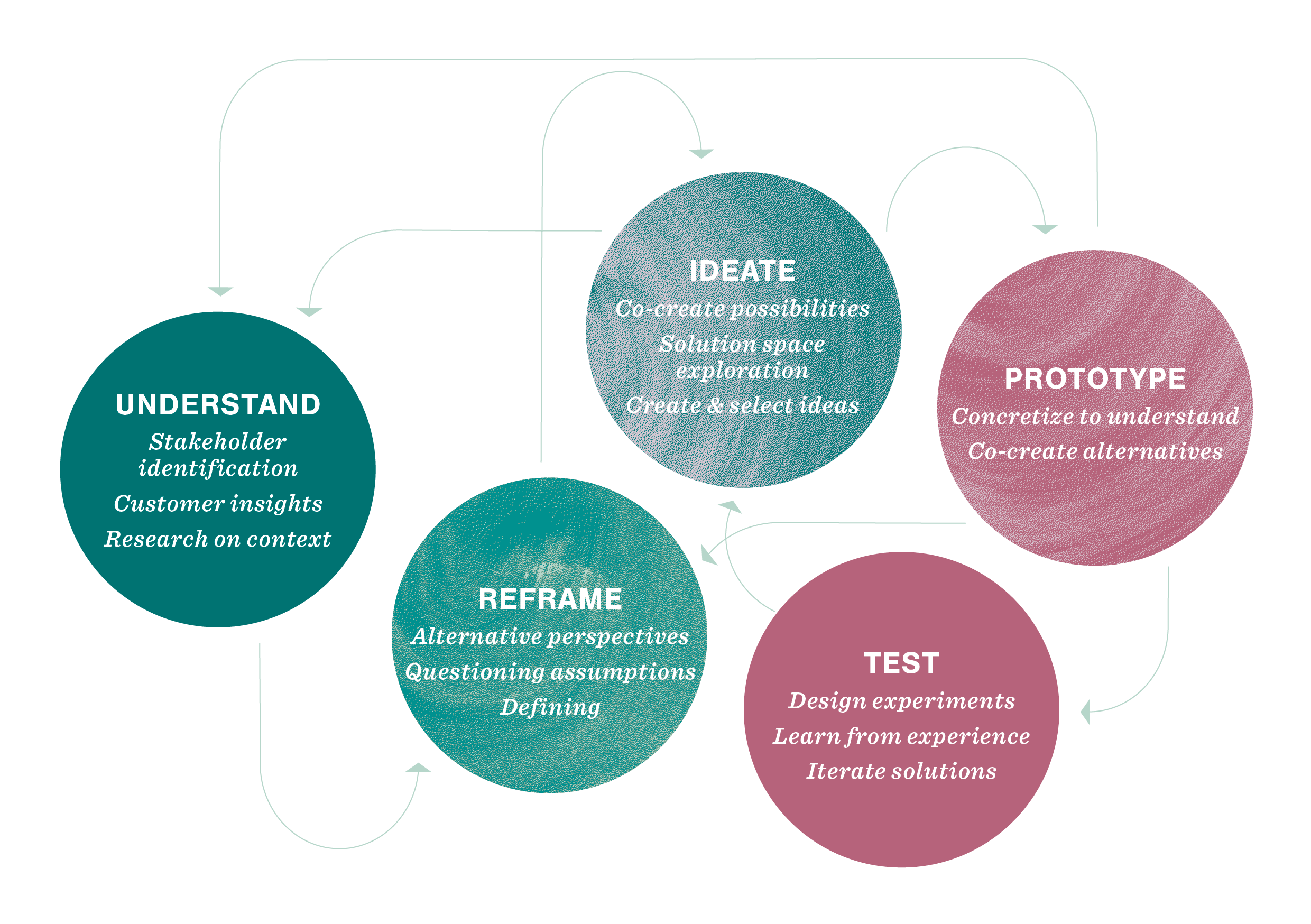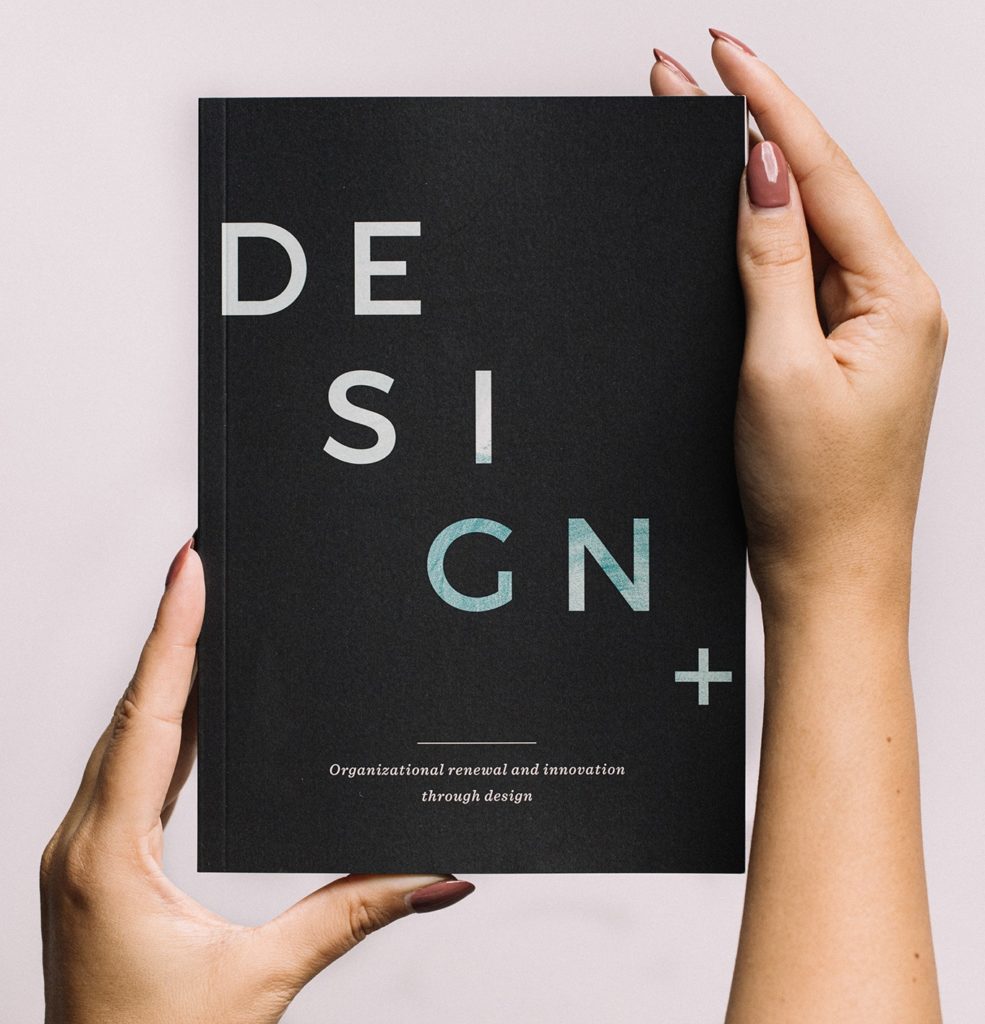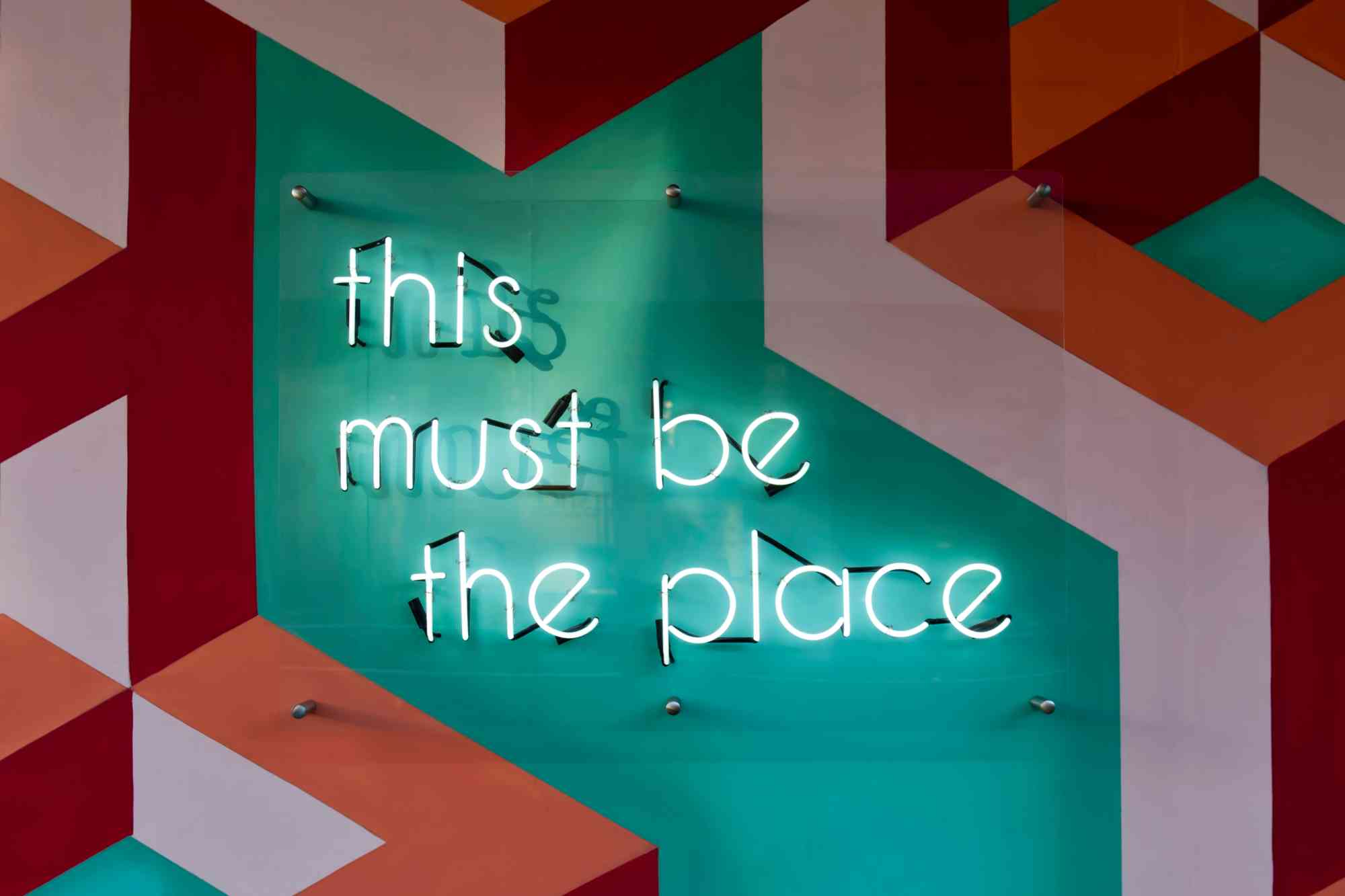Integrating design thinking to existing structures takes more than just top-down mandates. Designers can become active issue sellers concretising the benefits of design approaches throughout their organisations, but they need access to information and channels to do so.
Full postDESIGN+
Faced with an ever-increasing pace and complexity, organizations are in dire need for new types of approaches for enacting development. Design+ investigates how we can harness design approaches to create new value. We study how design thinking and design methods can be used to produce concrete solutions for complex and abstract challenges in organizations, overcoming frictions in collaboration amongst diverse stakeholders and promoting distributed initiative. Design+ has interviewed over two hundred designers, design managers and design business leaders to date, and continues to track a number of design initiatives as the unfold in companies.
The initiative hosts multiple projects, including an ongoing three-year multidisciplinary research project studying the interconnection between design and strategizing practices, funded by the Emil Aaltonen Foundation, and looking into design and sustainability, enabled by a donation from UPM. These projects build on a previous two-year project focusing on design thinking in innovation projects and organizational culture, funded by the Finnish Work Environment Fund and company partners 2017-2019.
What is design thinking?
Design thinking is an exploratory process, which allows unexpected discoveries along the way. It is iterative and non-linear by nature and differs significantly from the planning-centric, milestone-based processes that define traditional business practices. However, it is not disorganized or undisciplined. Instead, it aims to create results through inspiration, ideation, and implementation based on empathy, reframing, prototyping and co-creation in diverse groups.
Design thinking allows leaders and organizations to:
- Combine creative and analytical thinking
- Find customer/organization needs and dreams
- Re-define problems
- Create range of possible solutions
- Get beyond obvious ideas
- Prototype
- Continuously iterate

While measuring the impact of design is tricky, investment in design pays off: research has linked better design is linked to improvement in organizations’ business performance (in terms of, for example, time-to-market, adoption rate, share of wallet, market share, revenue growth, profitability, and brand value). The Design Management Institute’s 2015 Design Value Index, based on a portfolio of publicly traded stocks from companies considered to be design-driven, has shown repeatedly returns exceeding 200% over the S&P 500.
Eager to get started?
Take a look at our stakeholder mapping, ideation and experimentation toolkits to try our some of the ways of working key in design approaches.
DESIGN+ CONTACTS
-

Tua Björklund DF Director, Associate Professor
tua.bjorklund@aalto.fi
+358 50 511 3182 -

Vikki Eriksson Head of Research
vikki.eriksson@aalto.fi
+358 50 466 8713 -

Senni Kirjavainen Researcher
senni.kirjavainen@aalto.fi
+358 50 521 5964
INSIGHTS FROM THE FIELD
-
Tactics for selling design issues in large organisations
-
Measuring the impact of design
Tua Björklund 25/06/2018Measuring the impact of designYou get what you measure, so what should you be tracking when in comes to design? Taking a strategic turn can require turning one’s gaze inward even when becoming more customer-centric. -
In implementing design thinking, it’s the mindset that matters
Written by Satu Rekonen
Applying design thinking in non-design organisations requires a change in mindset, which is easier said than done. Buying into the logic of the iterative approach requires fluctuating between divergent and convergent thinking, and this can be a struggle for people accustomed to a more linear approach.
Full post
JOURNAL PUBLICATIONS
- Björklund, T.A., Keipi, T. & Maula, H. (2020). Crafters, explorers, innovators, and co-creators – Narratives in designers’ identity work. Design Studies, 68, 82-112.
- Björklund, T.A., Maula, H., Soule, S. & Maula, J. (2020). Integrating design into organizations: The coevolution of design capabilities. California Management Review, 62(2), 100-124.
- Björklund, T.A. & Keipi, T. (eds.) (2019). Design+ Organizational renewal and innovation through design. Aalto University, Helsinki. ISBN 978-952-60-3782-0. 220 p.
- Björklund, T.A. & van der Marel, F. (2019). Meaningful moments at work: Frames evoked by in-house and consultancy designers. The Design Journal, 22(6), 753-774.
 Aalto DF
Aalto DF


